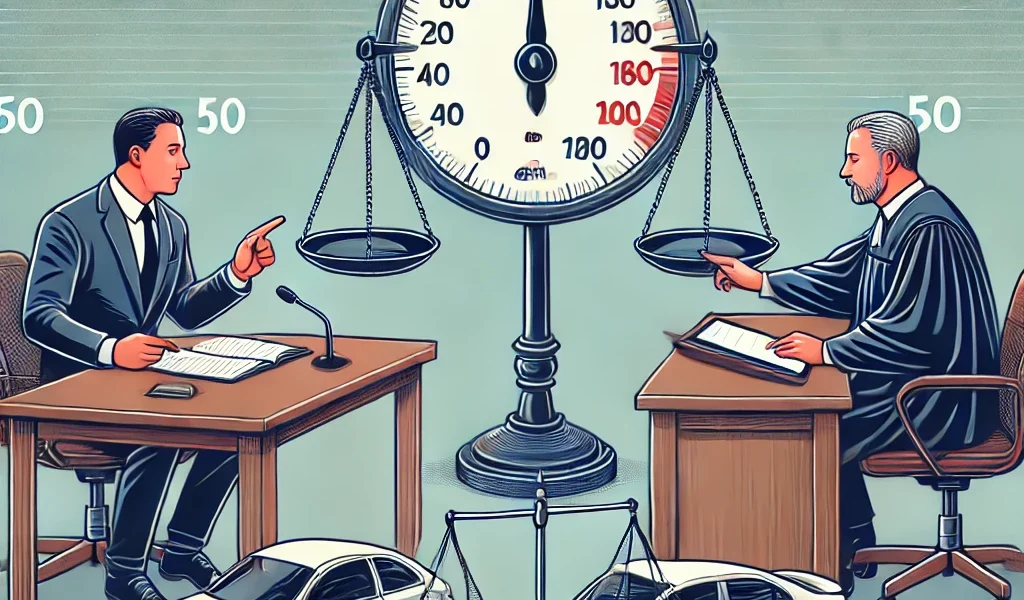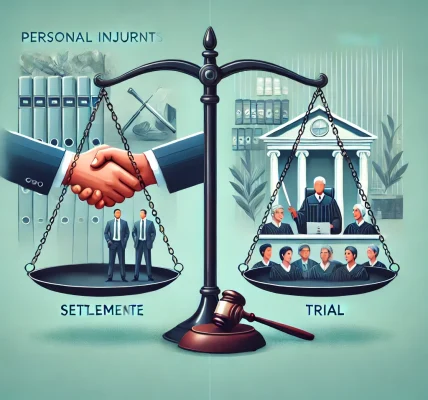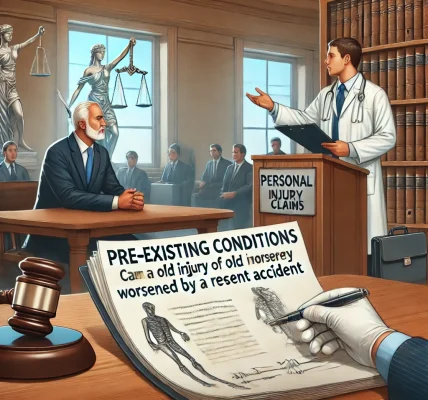Introduction
When accidents happen, determining who is at fault plays a crucial role in personal injury claims. However, what if both parties share some responsibility? This is where the legal concept of comparative fault comes into play.
Comparative fault laws vary from state to state, and they can significantly impact the amount of compensation a plaintiff can recover. Understanding how comparative fault works is essential for protecting your rights and maximizing your claim.
This article will break down comparative fault in personal injury cases, covering different types, real-world examples, and what to do if you’re partially at fault in an accident.
What Is Comparative Fault?
Comparative fault (also known as comparative negligence) is a legal principle used to determine liability when multiple parties share responsibility for an accident. Instead of barring a plaintiff from recovery if they contributed to the accident, comparative fault laws allow them to recover damages based on their percentage of fault.
For example, if you were injured in a car accident and found to be 20% at fault, your compensation would be reduced by 20%. If your total damages were $100,000, you would receive $80,000 after the reduction.
Types of Comparative Fault Systems
There are three main types of comparative fault systems in the United States:
1. Pure Comparative Fault
- In states with pure comparative fault, a plaintiff can recover damages even if they are 99% at fault for the accident.
- However, their compensation will be reduced by their percentage of fault.
- Example: If a plaintiff is 90% at fault and their damages are $50,000, they can still recover $5,000 (10%).
- States that follow pure comparative fault: California, Florida, New York, and others.
2. Modified Comparative Fault (50% Bar Rule)
- In states following the 50% bar rule, a plaintiff can recover damages only if they are less than 50% at fault.
- If they are 50% or more at fault, they cannot recover any compensation.
- Example: If a plaintiff is 49% at fault, they can recover 51% of their damages. If they are 50% at fault, they receive nothing.
- States that follow the 50% bar rule: Colorado, Georgia, Tennessee, and others.
3. Modified Comparative Fault (51% Bar Rule)
- In states following the 51% bar rule, a plaintiff can recover damages only if they are 50% or less at fault.
- If they are 51% or more at fault, they cannot recover anything.
- Example: If a plaintiff is 50% at fault, they can still recover 50% of their damages. If they are 51% at fault, they receive nothing.
- States that follow the 51% bar rule: Texas, Illinois, Ohio, and others.
Understanding which rule applies in your state is crucial when pursuing a personal injury claim.
How Comparative Fault Affects Personal Injury Cases
Comparative fault applies to many different types of personal injury cases, including:
1. Car Accidents
- Example: A driver runs a red light but the other driver was speeding.
- The court may assign 70% fault to the driver who ran the red light and 30% fault to the speeding driver.
- The speeding driver’s compensation is reduced by 30%.
2. Slip and Fall Accidents
- Example: A customer slips on a wet floor in a grocery store but was texting while walking.
- The court may assign 40% fault to the customer and 60% fault to the store for not putting up warning signs.
- The customer’s compensation is reduced by 40%.
3. Medical Malpractice
- Example: A patient fails to follow post-surgery care instructions and suffers complications.
- If the doctor made a mistake but the patient’s actions contributed to the injury, the court may assign partial fault to both parties.
4. Workplace Injuries
- Example: A worker fails to wear safety gear and gets injured, but the employer did not provide proper training.
- The worker may be found partially at fault, reducing their compensation.
Steps to Take If You’re Partially at Fault in an Accident
If you believe you may be partially responsible for an accident, here’s what you should do:
1. Do Not Admit Fault Immediately
- Never say “It was my fault” at the accident scene, as this can be used against you.
- Stick to the facts when speaking with insurance companies or law enforcement.
2. Gather Strong Evidence
- Collect photos, witness statements, and medical records to support your case.
- Evidence can help prove the other party’s negligence and minimize your percentage of fault.
3. Understand Your State’s Comparative Fault Law
- Knowing whether your state follows pure comparative fault or a modified version can help you understand your chances of receiving compensation.
4. Consult a Personal Injury Attorney
- An attorney can help argue against unfair fault assignments by insurance companies.
- They can negotiate a better settlement or take your case to court if necessary.
How Insurance Companies Use Comparative Fault Against You
Insurance companies often use comparative fault laws to reduce the amount they have to pay. Here’s how:
🔹 They May Overestimate Your Fault
- The insurer may try to blame you more than necessary to reduce their payout.
🔹 They May Use Statements Against You
- Anything you say to an adjuster can be twisted to assign higher fault to you.
- Always speak carefully and consider having an attorney handle communications.
🔹 They May Push for a Quick, Low Settlement
- If an insurance company believes you have partial fault, they might pressure you into accepting a low settlement before you understand your rights.
Conclusion
Understanding comparative fault is essential when pursuing a personal injury claim. Whether you are involved in a car accident, slip and fall, or medical malpractice case, your compensation can be affected by how fault is assigned.
By gathering strong evidence, knowing your state’s laws, and consulting an attorney, you can fight unfair fault assignments and maximize your settlement.
If you are dealing with an insurance company that is trying to reduce your compensation unfairly, speak to a personal injury lawyer to protect your rights and ensure you receive the compensation you deserve.
Disclaimer: This article is for informational purposes only and does not constitute legal advice. Always consult a qualified attorney for legal guidance regarding your specific situation.




